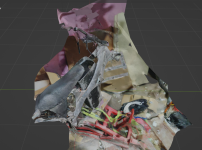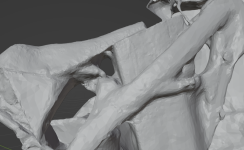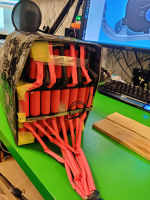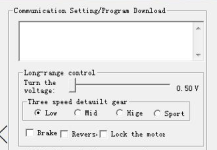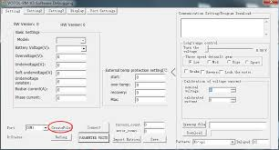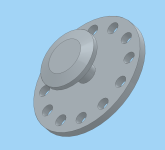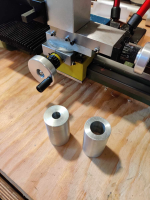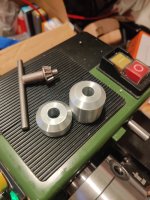I actually did some of such poor-man's-scanner-aided-design for my EXC. I've posted about it on advrider, but for some reason my photos there seem to disappear :| and I recently had a NAS server failure that impacted a lot of my photos from 2024. Maybe they'll come back: 2021 KTM 500 EXC-F setup for dual sport
I try to copy all my data regularly (every week to month, depending on the data) to multiple offline harddisks, which alll then store in different rooms of the house. (back when I had multiple computers all working at the same time, I copied each one's data to all the others). Each backup doesn't overwrite the previous, but goes beside it, so a fail-during-write doesn't trash the backup and potentially lose all copies of something.
So far, except for one occasion a couple decades ago, that has prevented general data loss.
That time was an unusual moment, where I had to shuffle data among drives to make room, and they were all online at that moment, all writing data, and there was a grid failure that damaged the PSUs in several machines, and took the system down during write...I actually lost multiple harddisks, and had data corruption on virtually every other one.
Apparently even the free one is a "subscription".But long story short, i used polycam to scan the plastic tail part, measured a known dimension to get the scale right, and then imported it as a reference mesh in CAD (I use Siemens SolidEdge because it's free and has no restrictive licensing like Fusion or OnShape).
(there are a number of programs for various things that I'd love to buy (if I had the budget) but are subscription, so are unusable. Some companies have gone subscription and then gone back to "ownership" models because of customer loss, but very few do that. Most don't care what customers think and just shove their way (of whatever things) down the customers' throats).
I'm still using an ancient music-creation software, Cakewalk SONAR. I won't use their new stuff: the company went subscription, then went under, then were bought by another company who brought it back "for free" but with forced regular updates, logins to their internet site to even open the software on your own computer, and subscription...then they stopped updating the free one (but it still has all the forced updates, logins, etc so they can nuke it whenever they want, which has already happened multiple times because of various errors on their end), instead making a new paid-only subscription version that they also force-update. (if you don't update, it will just stop working as it can't login to their server and then you can't run the program or access your files). Users start threads about this issue all the time on their forums, and instead of the company replying or changing their methods to at least provide the *option* to purchase a perpetual license that doesn't have to ever go online/login/update/etc., they just lock all such threads, including any other kind of thread where someone mentions "subscription". Not very user-friendly company (but back when I got mine, they were the best at it).
Generally speaking, for parts that need a good interface with a mesh scan but otherwise are mostly for looks, I think Blender is a decent choice as well. Given proper scaling, you can create very complex, curved shapes very easily, much more easily than parametrically modelled surfaces. I know that stuff like BlueSurf and other advanced tools can help with that, but we're doing hobby 3d-printing not product design for millions for injection molding. I'll likely use Blender for CRF fairings if I ever get to that point (I'd like to cover the battery and cabling in additional layer of fiberglass on the outside).
I've been working slowly on learning Blender, but it's not an easy UI, it could be designed much better. (I haven't found any good UIs yet).
For those kinds of things I can probably just do that to start with...the thing I "need" the scanning for is all the irregular surfaces and shapes that are virtually impossible for me to model even closely (much less accurately) without it.And finally, if you actually need a part to truly fit, not just conform to the shape roughly, the mesh is mostly used for clearance purposes, and in the cad you can create reference surfaces (planes for flats, cylinders for holes) to build the design off of parametrically.
But I haven't gotten to doing any of this stuff yet, so we'll see how it works out when I do--it might be easier to start with a scan either way.
I have some old rackmount HP servers that were originally used in sets to run 3D-rendering for animations, that I don't yet have setup for anything. They're not efficient, or quiet, but they do have more CPU and memory than my everday computer, and are running Windows10. I'd already intended one of them to be dedicated to 3D modelling / printing applications, and can easily dedicate more than one to that if it's necessary.One issue with scanners is that they require quite a powerful PC to work well. In my future workshop, I envision a connection to a server rack where the GPUs would sit, but right now dragging my PC to the garage is rather out of the question. A laptop would need to be quite beefy as well and they're prone to overheat -
They don't have much in the way of GPU. I have an old "PNY NVIDIA GeForce GTX 560 1 GB Enthusaiast Edition" that can go in there, but might have to power it from a separate (external) PSU; it's probably better than any other GPU I have but that isn't saying much vs today's stuff
How many scans? (you might have missed typing the number in?)so the photo-based scanning apps are actually really decent for the sweet price of 0 (well, Polycam itself has like a limit of scans or something, which i haven't hit yet - I'm also not sponsored by them or anything, I just found it to work reasonably well; I've used 123D in the past and it was markedly worse.)



